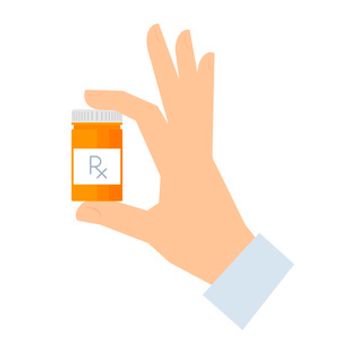
A study has found that noninvasive vagus nerve stimulation can provide pain relief for up to 60 minutes after an acute attack.


A study has found that noninvasive vagus nerve stimulation can provide pain relief for up to 60 minutes after an acute attack.

AARP and other groups reacted strongly to reports that the pharmaceutical industry was using efforts to combat the opioid crisis to roll back an agreement to close the coverage gap in Medicare Part D.

States, communities, and organizations received more than $1 billion in grants from HHS to help them fight the opioid crisis; a preliminary study has found that children conceived through infertility treatments could be at higher risk for cardiovascular disease; the State of California is alleging that AbbVie boosted sales of Humira through kickbacks to prescribers and a network of nurse ambassadors.

There are 2 ways prescription drug monitoring programs can improve, said Jeffrey Gudin, MD, Pain Management and Palliative Care at Englewood Hospital and Medical Center.

BlueCross BlueShield of Tennessee is the latest insurer to announce it will no longer pay for OxyContin and will instead cover newer abuse-deterrent opioids; a new prototype may upend the way people get vaccinated during an influenza pandemic through patches with microscopic needles; as Hurricane Florence prepares to hit the Carolinas, health officials are trying to protect seniors, who tend to be the most vulnerable and bear the brunt of storms.

Two studies presented at the PAINWeek conference in Las Vegas, Nevada, took a look into the prevalence of acute medication use and overuse among migraineurs, as well as rates of medication discontinuation due to lack of efficacy or side effects.

The pendulum has swung so far that even patients with cancer pain may not get the appropriate medications they need, but there are things healthcare providers can keep in mind when caring for patients who need opioids for pain, said Jeffrey Gudin, MD, director of Pain Management and Palliative Care at Englewood Hospital and Medical Center.

Illinois has passed a law allowing doctors in the state to prescribe marijuana as pain medication in a fight against the opioid epidemic; the FDA has told California that a cancer warning label for coffee is misleading; and the FDA is continuing its push against the illegal sale of opioids.

This study evaluated a passive clinical pharmacist intervention to reduce the coprescribing of benzodiazepines and opioid analgesics by using chart review notes to alert providers.

Patients with low back pain have a high opioid burden, which increases following spinal fusion surgery; 27% of fusion patients filled opioid prescriptions at least 12 months post surgery.

Recently, 2 studies investigated pain experienced in patients with multiple sclerosis and how the disease is treated, overall.

Payers and providers are looking to keep vulnerable patients in pain from becoming addicted to painkillers, but those who live with pain on a daily basis are understandably upset at the thought of losing access to medications they say keep them functional. Here are 5 takeaways from recent coverage about this important issue.

The FDA is trying to ensure that patients with chronic pain have access to the medication they need; Pfizer just raised list prices for more than 40 of its drugs, some with increases as much as 9.4%; hospitals are becoming better at identifying the symptoms of sepsis sooner, but an update in technology to test for sepsis is needed.

For many patients with migraine, cannabis served as a substitute for other pain medications, including opioids.

Coverage of our peer-reviewed research and news reporting in the healthcare and mainstream press.

Overcoming the challenges to a holistic approach to opioid recovery is critical to engaging patients safely and comfortably, and to supporting sustained recovery. Here are 5 elements that contribute to a successful integrated approach.

Reimbursement models, novel gene therapy–based treatments, and price transparency: these were some of the topics covered by presenters and panelists at the annual meeting of the Community Oncology Alliance.

Earlier this week, CMS tweaked an opioid policy aimed at Medicare Part D patients that had drawn criticism when it was first released in draft form. Critics said it would have sharply reduced access to opioids for those with chronic pain, people with cancer or other types of pain. Two palliative care doctors said they are waiting to see if the changes are implemented in a meaningful way for their patients.

Learn About My Pain (LAMP), a recent study published in Annals of Internal Medicine that evaluated the efficacy of simplified group cognitive behavioral therapy (CBT) versus group pain education (EDU) and usual care in a disadvantaged population, was found to be effective. Researchers found that in general, both CBT and EDU, but not usual care, were associated with statistically significant improvements in pain intensity.

Patients suffering from back pain worldwide are being treated with an overuse of inappropriate tests and treatments such as imaging, opioids and other medications, and surgery, instead of being educated about their condition and to stay active, a new series of papers in The Lancet reported.

The Patient-Centered Outcomes Institute shared results of 5 recent publications summarizing results from their awardees. The studies included research on a decision aid for patients with heart failure, 2 different approaches to treating mental illness, and addressing chronic pain.

Opioid use incidence and prevalence rates decreased with implementation of an opioid safety initiative, whereas nonsteroidal anti-inflammatory drug rates remained constant. Rates of adverse events were higher among opioid users.

Proprietary technology helps overcome the problem of long travel distances for those taking part in clinical trials.

A discussion of chronic pain prevalence, care obstacles, and potential opportunities for care improvement within the accountable care organization context at University of California, San Francisco Health.

Hydroxychloroquine (HCQ) showed no signs of effectiveness when compared with a placebo with an indication to relieve moderate to severe hand pain and radiographic osteoarthritis, according to a randomized trial published in Annals of Internal Medicine.

259 Prospect Plains Rd, Bldg H
Cranbury, NJ 08512
© 2025 MJH Life Sciences®
All rights reserved.
